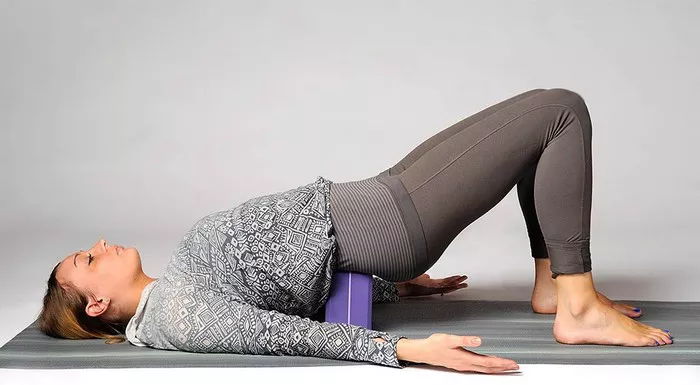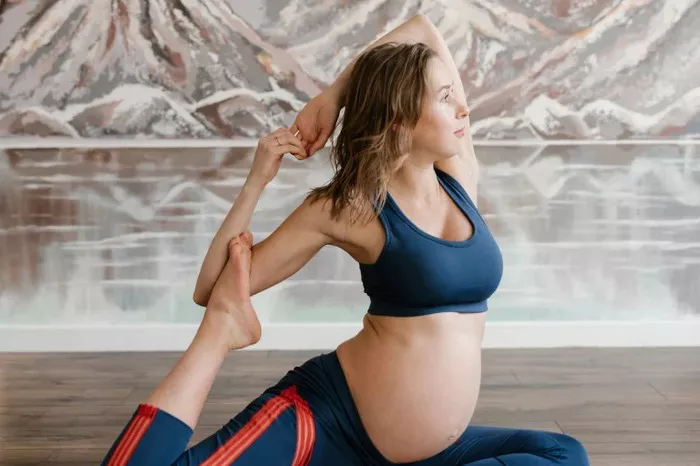Restorative yoga is a gentle and soothing practice that focuses on relaxation and rejuvenation. It utilizes props such as blankets, bolsters, and blocks to support the body in various poses, allowing practitioners to experience deep release and restorative benefits. In this article, we will explore a restorative yoga sequence specifically designed to enhance relaxation and recovery, utilizing props to maximize comfort and ease in each posture.
Restorative yoga is a practice that prioritizes relaxation and stress reduction. Unlike more active forms of yoga, such as Vinyasa or Ashtanga, restorative yoga involves holding gentle poses for extended periods, typically ranging from 5 to 20 minutes. The focus is on allowing the body to completely relax, releasing tension both physically and mentally.
One of the key elements of restorative yoga is the use of props to support the body in various poses. Props such as bolsters, blankets, blocks, and straps help create a sense of comfort and stability, allowing practitioners to fully surrender into each posture without strain or effort. This supportive environment encourages deep relaxation and helps activate the parasympathetic nervous system, which is responsible for rest and digest functions in the body.
Benefits of Using Props in Restorative Yoga
The use of props in restorative yoga offers several benefits:
1. Enhanced Comfort: Props provide support and cushioning, making it easier for practitioners to relax into each pose comfortably. This increased comfort allows for deeper relaxation and longer holds in each posture.
2. Improved Alignment: Props help maintain proper alignment in poses, reducing the risk of strain or injury. By supporting the body in optimal alignment, props allow practitioners to experience the full benefits of each posture without unnecessary tension.
3. Greater Accessibility: Props make yoga more accessible to individuals of all ages, body types, and physical abilities. They can be used to modify poses and accommodate specific needs or limitations, ensuring that everyone can participate in the practice safely and comfortably.
4. Deeper Relaxation: The supportive nature of props encourages the body to relax fully, promoting a sense of calm and tranquility. By minimizing physical effort and strain, props help quiet the mind and facilitate a deeper state of relaxation.
Restorative Yoga Sequence with Props
The following sequence is designed to promote relaxation and recovery, making use of various props to support the body in each pose. Practitioners are encouraged to move mindfully and listen to their bodies, adjusting the props as needed to find a comfortable and sustainable position. Each pose should be held for 5-10 minutes, allowing ample time to relax and unwind.
1. Supported Child’s Pose (Balasana)
Place a bolster lengthwise on your mat.
Kneel on the mat with your big toes touching and knees wide apart.
Place a folded blanket under your hips for extra support if needed.
Fold forward, draping your torso over the bolster and resting your forehead on the support.
Extend your arms alongside the bolster or stack your fists and rest your forehead on them.
Close your eyes and focus on deep, steady breaths, allowing your body to relax completely.
2. Supported Reclining Bound Angle Pose (Supta Baddha Konasana)
Place a bolster horizontally on your mat.
Sit with your knees bent and feet together, allowing your knees to fall open to the sides.
Place a folded blanket or block under each knee for support.
Lie back on the bolster, ensuring that your entire spine is supported.
Place blocks or folded blankets under your outer thighs for additional support if needed.
Rest your arms by your sides with palms facing up, or place your hands on your belly.
Close your eyes and focus on softening your breath and releasing tension in your hips and groin.
3. Supported Bridge Pose (Setu Bandhasana)
Place a block vertically under your sacrum at its lowest or medium height.
Lie on your back with your knees bent and feet hip-width apart, arms resting by your sides.
Lift your hips and slide the block under your sacrum, adjusting its height as needed for comfort.
Allow your arms to relax by your sides or interlace your fingers under your lower back for support.
Close your eyes and breathe deeply, feeling the gentle opening in your chest and shoulders.
4. Supported Supine Twist (Supta Matsyendrasana)
Lie on your back with your knees bent and feet flat on the mat.
Extend your arms out to the sides in a T-position, palms facing down.
Shift your hips slightly to the right and then drop both knees to the left, resting them on a bolster or stacked blankets.
Keep your shoulders grounded as you turn your head to gaze over your right shoulder.
Close your eyes and focus on deepening the twist with each exhale, releasing tension in your spine and shoulders.
5. Supported Legs-Up-the-Wall Pose (Viparita Karani)
Sit sideways next to a wall with your right hip and shoulder touching the wall.
Swing your legs up the wall as you lie back, keeping your hips as close to the wall as comfortable.
Place a folded blanket or bolster under your hips for support if needed.
Extend your arms out to the sides with palms facing up, or place your hands on your belly.
Close your eyes and allow your breath to become slow and steady as you relax into the pose.
6. Corpse Pose (Savasana)
Lie flat on your back with your legs extended and feet hip-width apart.
Place a bolster or rolled blanket under your knees for support if needed.
Allow your arms to rest by your sides with palms facing up, fingers gently curled.
Close your eyes and take a few deep breaths to settle into the pose.
Relax every muscle in your body, letting go of any remaining tension or effort.
Stay in Savasana for 5-10 minutes, enjoying a state of deep relaxation and stillness.
Conclusion
A restorative yoga sequence with props offers a deeply relaxing and rejuvenating experience, allowing practitioners to release tension, reduce stress, and promote overall well-being. By utilizing props to support the body in gentle poses, individuals can enhance their relaxation and recovery, fostering a sense of peace and tranquility both on and off the mat. Incorporate this sequence into your regular yoga practice to cultivate a greater sense of ease and balance in your life.


















